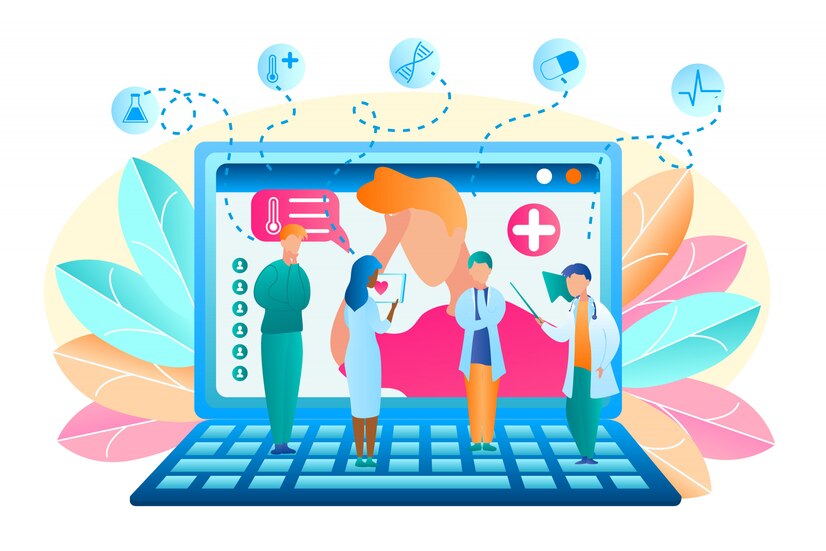How to Develop a HIPAA Compliant App: A Step-by-Step Guide

In today's digital world, mobile apps have become essential tools for managing health data, connecting patients with healthcare providers, and improving overall patient care. However, when developing apps for the healthcare industry, developers must ensure they adhere to the strict regulations set forth by the Health Insurance Portability and Accountability Act (HIPAA). Failing to comply with HIPAA can result in hefty fines and severe consequences for healthcare organizations, so understanding how to develop a HIPAA compliant app is critical.
This guide will walk you through the key steps to take when building an app that meets HIPAA standards, from understanding the law to ensuring data protection.
What is HIPAA?
The Health Insurance Portability and Accountability Act (HIPAA) is a U.S. federal law designed to protect sensitive patient information. HIPAA applies to healthcare providers, health plans, and healthcare clearinghouses, as well as any business associates that process patient data. HIPAA ensures that patients' health information is kept confidential and secure.
HIPAA has two main components that are most relevant for app developers:
To develop a HIPAA compliant app, you need to ensure that your app meets both these requirements.
Steps to Develop a HIPAA Compliant App
1. Understand the Types of Data Your App Will Handle
Before you begin designing or coding your app, you must identify the types of data it will process. If your app collects, stores, or transmits ePHI, it must comply with HIPAA regulations.
ePHI includes any health information that can identify a patient, such as:
Medical records
Prescription information
Test results
Appointment history
Billing information
If your app doesn't handle ePHI, you may not need to be HIPAA compliant. However, if it does, you must ensure compliance with all applicable HIPAA regulations.
2. Ensure Data Encryption
HIPAA requires that any sensitive data be encrypted both in transit and at rest. This means that any patient data sent over the internet must be encrypted using secure protocols like TLS (Transport Layer Security) to protect it from unauthorized access.
For data at rest (i.e., data stored in the app or database), encryption ensures that even if a hacker gains access to your database, the data remains unreadable without the decryption key.
3. Implement Strong Access Controls
One of the core tenets of HIPAA compliance is restricting access to patient data. You should implement robust access controls, such as:
Role-based access: Ensure that users only have access to the data necessary for their role.
Authentication: Implement strong user authentication mechanisms, such as two-factor authentication (2FA), to verify users before granting access to sensitive data.
Audit logs: Track all access to ePHI. HIPAA mandates that healthcare providers maintain an audit trail that records who accessed patient data and when.
4. Conduct a Risk Assessment
A key requirement for HIPAA compliance is performing a risk analysis. This means identifying potential vulnerabilities in your app and taking steps to mitigate those risks. Regular risk assessments help ensure that your app’s security measures are up-to-date and effective in protecting patient data.
Risk assessments should evaluate:
The physical security of devices storing or transmitting ePHI
The security of data transmissions
The possibility of unauthorized access
The potential for data breaches
. Establish Business Associate Agreements (BAAs)
If your app integrates with third-party services that handle patient data (such as cloud storage providers or analytics tools), you must establish a Business Associate Agreement (BAA) with these vendors. The BAA outlines the third-party’s responsibilities for safeguarding ePHI and ensures they comply with HIPAA.
Without a BAA, your app could be held liable for any HIPAA violations committed by third-party vendors.
. Implement Data Minimization and Retention Policies
HIPAA requires that you only collect the minimum amount of data necessary for the intended purpose. This means your app should avoid storing excessive amounts of patient information or unnecessary details. You should also set clear data retention policies, ensuring that ePHI is only retained for as long as needed for its intended purpose and then securely deleted.
. Perform Regular Security Updates and Testing
To ensure ongoing HIPAA compliance, you must regularly update your app to address emerging security vulnerabilities. This includes applying security patches, conducting penetration tests, and evaluating your app’s security protocols.
Failing to regularly maintain your app can expose sensitive data to new threats and vulnerabilities, putting you at risk of non-compliance.
. Provide User Training and Awareness
It’s important to educate your users—whether they’re healthcare providers, administrators, or patients—on how to securely use your HIPAA-compliant app. Provide training on:
How to protect sensitive information
How to recognize phishing attacks
The importance of using strong passwords
Educating users is key to ensuring compliance and reducing the risk of human error, which can lead to data breaches.
Final Thoughts: Developing a HIPAA Compliant App
Building a HIPAA-compliant app is no small feat, but it is essential for the safety and privacy of your users. By following the steps outlined in this guide, including understanding HIPAA requirements, implementing robust security measures, and working closely with third-party vendors, you can develop a HIPAA compliant app that meets all the necessary regulations and ensures the protection of sensitive patient data.
Remember that HIPAA compliance is not a one-time task—it requires ongoing vigilance to stay updated on regulations and best practices. By prioritizing security, privacy, and proper handling of ePHI, you can create an app that healthcare providers and patients can trust.
Note: IndiBlogHub features both user-submitted and editorial content. We do not verify third-party contributions. Read our Disclaimer and Privacy Policyfor details.







